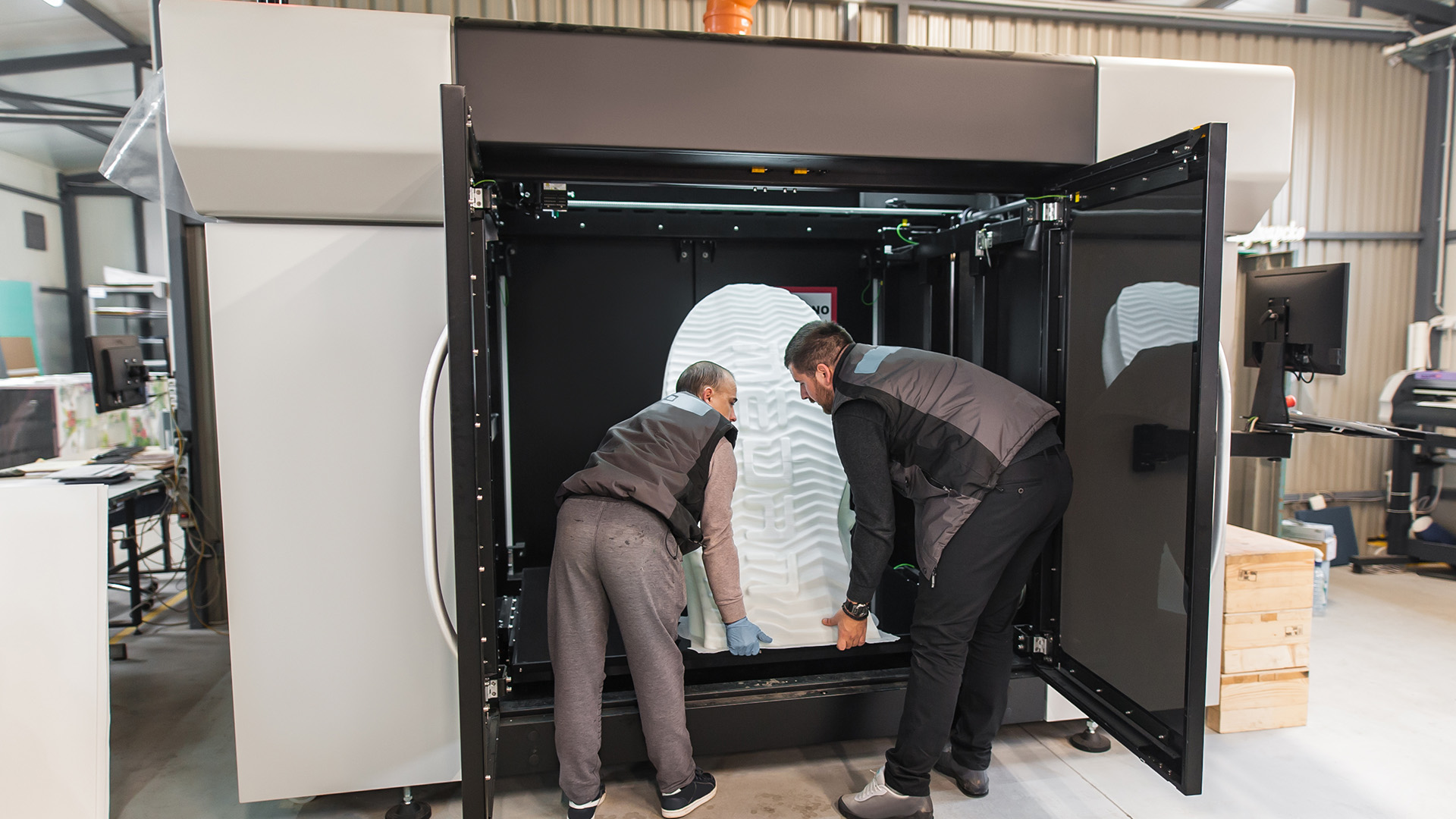New open networks for 3D printing bring gig economy opportunities to manufacturing – and create alternatives to the established manufacturing ecosystem
In the traditional view, manufacturing is an industry where employees are physically constrained to the factory floor, working alongside stationary machines where large quantities of raw materials are handled and complex, collaborative processes are followed. But just as technology has given power to the people and opened the door to new software-first business models in other industries – think Uber, Instacart, and AirBnB. In aerospace, outliers like rocket-ship maker Relativity Space are reimagining manufacturing, with an assist from 3D printing. . This company is projecting a production reduction schedule from 12 to 18 months into 60 days, part count reduction from 30,000 to 300, and cost reduction from $100 million to $12 million. One can only imagine what this will do to space travel when realized.
Southeast Michigan-based 3D printing network Project DIAMOnD, which stands for Distributed, Independent, Agile Manufacturing on Demand and connects 300 small-and-medium sized manufacturers through a smartphone type software platform in the heart of Michigan’s manufacturing base, aims to do just that. Launched in 2020 by the non-profit Industry 4.0 knowledge center Automation Alley following a manufacturing grant through the CARES Act, Project DIAMOnD offers a unique approach to manufacturing that’s powered by a decentralized network governed on the principles of blockchain technology in which no one entity is controlling it or disintermediating the manufacturer. The intended net result for the Project DIAMOnD platform is to be a secure, scalable and traceable marketplace where buyers and sellers can transact business safely and efficiently. One likely end-state facilitated by Project DIAMOnD is that manufacturing will be the next industry ripe for disruption by the gig economy.
The grant was originally made in response to the pandemic-induced need to develop stockpiles of PPE such as masks and face shields. But as the network took shape, participating companies quickly recognized the opportunity to use 3D printing for a variety of products and components, greatly reducing cost per part and shortening the traditional manufacturing build cycle. Parts developed by Project DIAMOnD members to date include inspection fixtures, custom vise jaws, conveyor components, hydraulic manifolds, nameplates, custom tooling, end of arm tools for robotic handling applications, electronic housings, 3D printer components, drumsticks, golf putters, machine tool components, gauges, and furniture brackets.
3D printing enables on-demand solutions for a wide spectrum of needs. Its versatility is suited to address supply and demand imbalances in the supply chain caused by economic disruptions like the pandemic. Additive manufacturing through an open market concept removes barriers to entry and is certain to upend the current manufacturing ecosystem. For example, a report by HP and AT Kearney estimates that $4 – $6 trillion will be disrupted and redistributed from traditional manufacturing due to the accelerated growth of 3D printing.
Perhaps that’s why it scares the heck out of many old school manufacturers who won’t accept that software and advanced Industry 4.0 technologies are the future of the industry. Anyone with a 3D printer and basic engineering skills can become a manufacturer and potential competitor who can do it faster, better and cheaper. It’s a gig economy opportunity in a staid and risk-averse industry that cannot afford to have elements of its business syphoned off to outliers.
Still, the manufacturing industry faces many fundamental hurdles with 3D printing. For all the transformative ways that 3D printing will impact the world, gig manufacturers will need to be aware of current manufacturing laws and regulations, and the new networks are not without their challenges. For example, Project DIAMOnD is currently working on facilitating creating standards and technologies for Digital Rights Management (DRM), much like the music industry. The objective is to treat a digital design or the recipe to create a product as a work of art in which the artist retains intellectual property rights. This is critical to fostering a vibrant innovation landscape.
The other challenge to 3D printing adoption is that traditional manufacturers are making assumptions on the future readiness of 3D printing using projections based on the current state of the technology. But it’s actually changing at an exponential rate, which is a blind spot. Companies around the world are hard at work making 3D printing effective at lower costs and at scale. Manufacturers that ignore it do so at their peril.
Prior to the pandemic, Auburn Hills, Michigan-based CMP Technologies provided robotics and automation customer-specific training. But once COVID-19 hit, it turned their world upside down. Suddenly, companies were not taking on new projects and there seemed to be no indicators for when things would turn back around.
“We spent our days looking for new opportunities and a way to climb back up. That’s when we came across Automation Alley’s Project DIAMOnD and the huge opportunity it presented,” Michael Paselk, CMP Technologies’ business owner and technical director, said. Today, because of Project DIAMOnD, CMP Technologies is offering 3D printing service for prototypes and production parts. Project DIAMOnD has literally transformed our business and we will be forever grateful,” he said.
Small manufacturers who are eager to learn about the many benefits of additive manufacturingcan share best practices and help one another get started with the technology, which, for many of them, has been a huge culture shift. Perhaps the most exciting impact of Project DIAMOnD is that manufacturers who were skeptical of 3D printing before are now all in, enthusiastically innovating and racing to design, produce and sell the products and components of tomorrow.
Initially limited to 300 small-and-medium sized manufacturers, Project DIAMOnD aims to open its waitlist to new entrants in the second quarter 2022.
For more on Project DIAMOnD, see Automation Alley’s exhibit at our Industry 4.0 conference, Integr8, May 10 at Suburban Collection Showplace in Novi, MI.
Pavan Muzumdar is chief operating officer of Automation Alley, responsible for facilitating smooth functioning of the organization and enabling execution of strategic goals. Blending his 20-plus years of experience in executive leadership roles with his love of financial analysis and entrepreneurial endeavors, Muzumdar brings a people-focused, fundamentals-based analytical approach to his work.




